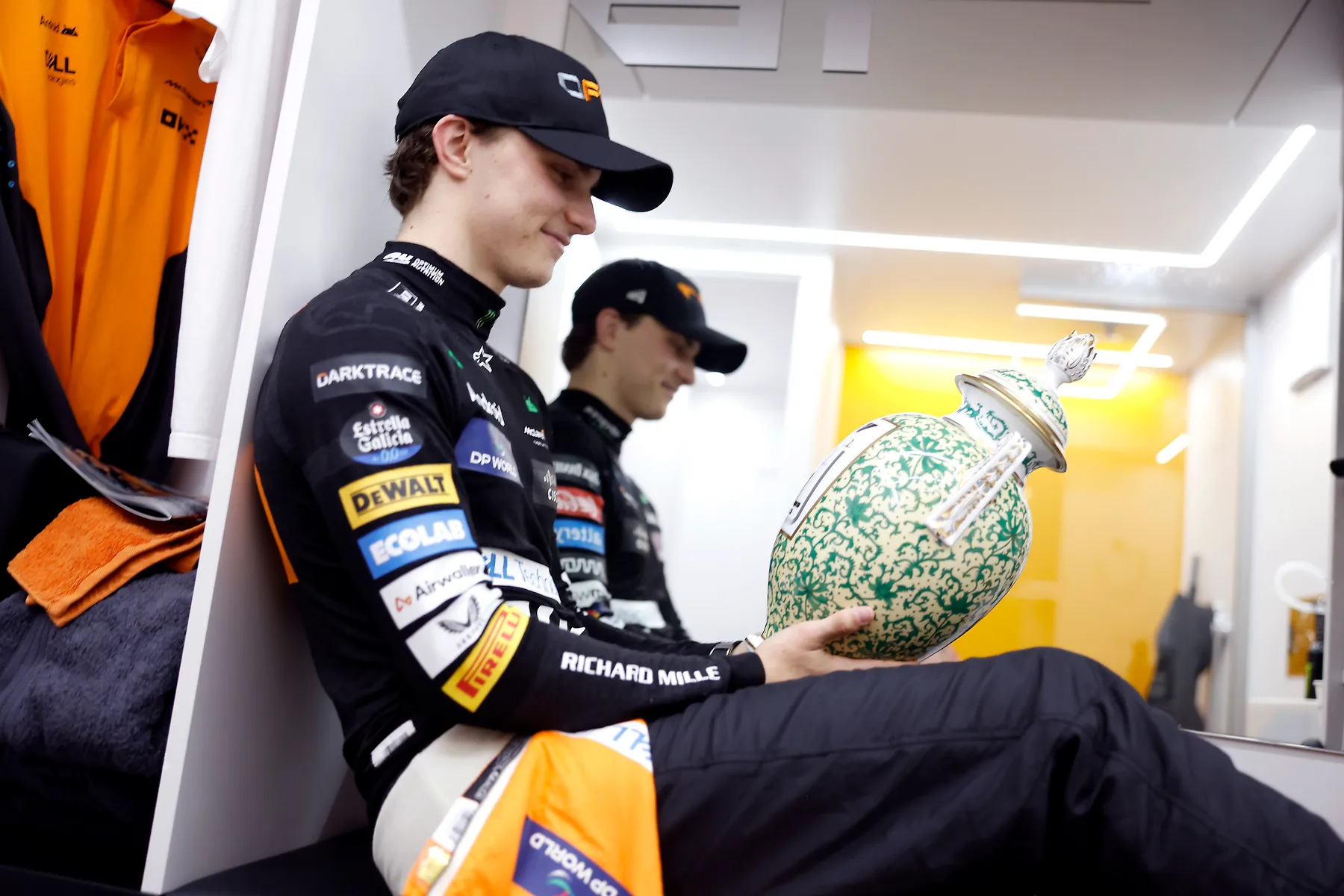In a high-stakes world where milliseconds can determine success or failure, the recent Hungarian Grand Prix brought McLaren back into the spotlight with a dramatic team orders controversy.
This situation not only highlighted the intricate balance between individual ambition and team strategy but also sparked discussions about what Lando Norris should have done differently.
We delve into the details of the incident, the implications for McLaren, and the lessons learned from this high-octane episode.
The Hungarian Grand Prix: Setting the Scene
The Hungarian Grand Prix, held at the Hungaroring, is known for its technical challenges and narrow, winding track.
This year’s race was particularly significant for McLaren as they sought to solidify their resurgence in the Formula 1 constructors’ championship.
Lando Norris started from pole position, a testament to McLaren’s improved performance and strategic prowess.

The Early Laps: A Battle Unfolds
From the onset, the race was a fierce battle between teammates Lando Norris and Oscar Piastri. Norris, despite starting in the lead, found himself trailing Piastri in the opening laps.
The dynamic between the two drivers was palpable, with both pushing their cars to the limit.
The tension was exacerbated by the team’s decision to pit Norris first during the final round of stops, enabling him to undercut Piastri and regain the lead.
The Team Orders Controversy: A Turning Point
As the race progressed, McLaren’s pit wall issued a series of team orders to Norris, instructing him to allow Piastri to pass and take the lead.
This decision was met with resistance from Norris, who argued over the radio that he needed the points to compete against Max Verstappen for the championship.
The Radio Exchanges: A Closer Look
The radio exchanges between Norris and the McLaren pit wall provide a fascinating insight into the pressures and dilemmas faced by drivers in real-time.
Norris’s reluctance to comply with the team orders was evident as he debated the necessity and timing of the swap.
His suggestion that Piastri should catch up before being allowed to pass indicates his competitive nature and desire to maintain his position.

Martin Brundle’s Perspective: What Norris Should Have Done
In the aftermath of the race, former F1 driver and commentator Martin Brundle weighed in on the situation in his post-race column for Sky Sports.
Brundle argued that Norris would have been better off complying with the team orders immediately.
By doing so, he would have maximized his chances of reclaiming the lead later in the race.
The Strategic Misstep: Timing is Everything
Brundle’s analysis centers on the idea that timing is crucial in Formula 1. By delaying the swap, Norris inadvertently reduced the window of opportunity to launch a counter-attack against Piastri.
Had he allowed Piastri to pass earlier, he might have had more laps to strategize and potentially overtake his teammate once again.
The Dual Nature of F1: Team vs. Individual
One of the core dilemmas in Formula 1 is the dual nature of the sport. Drivers are part of a team, yet they compete as individuals. This duality often leads to conflicts, especially when team orders come into play.
Brundle highlighted this tension, noting that while team instructions are a contractual obligation, the inherent competitiveness of drivers can make compliance challenging.
Lessons from History: The Multi-21 Incident
Brundle drew parallels with the infamous Red Bull Multi-21 incident in Malaysia 2013, where Sebastian Vettel ignored team orders to pass Mark Webber.
This incident underscores the delicate balance teams must maintain between asserting authority and managing driver egos. It also raises questions about how different drivers, with varying competitive instincts, might handle similar situations.
The Aftermath: Implications for McLaren
McLaren’s first 1-2 finish since the 2012 Italian Grand Prix is a significant milestone. It underscores their resurgence and strategic acumen. However, the team orders controversy has broader implications for team dynamics and future races.
Moving Up the Standings: Constructors’ Championship
McLaren’s strong performance in Hungary propelled them ahead of Ferrari in the constructors’ championship, securing second place.
This achievement is a testament to their collaborative efforts and strategic planning. It also highlights the importance of team cohesion and effective communication in achieving long-term success.
Driver Standings: The Battle Continues
In the drivers’ standings, Norris remains second, trailing Max Verstappen by 76 points. Piastri, meanwhile, is in fifth place, 40 points behind Norris.
This internal competition within McLaren adds an extra layer of intrigue to the remaining races of the season. How the team manages this dynamic will be crucial in their quest for both the constructors’ and drivers’ championships.
The Road Ahead: Navigating Team Dynamics
As McLaren looks ahead to the remaining races, the team orders controversy in Hungary serves as a valuable lesson in managing team dynamics.
Ensuring that both drivers feel supported while also adhering to strategic decisions will be key to maintaining their competitive edge.
Strengthening Team Ethic: A Unified Approach
One of McLaren’s strengths this season has been their strong team ethic. Under the leadership of team principal Andrea Stella, the team has fostered a culture of professionalism and mutual respect.
This approach has been instrumental in their recent successes and will be crucial in navigating any future challenges.
Balancing Ambition and Strategy: Finding the Sweet Spot
The Hungarian Grand Prix highlighted the delicate balance between individual ambition and team strategy. Moving forward, McLaren will need to find the sweet spot where both drivers can pursue their personal goals without compromising the overall team strategy.
This balance will be essential in their continued pursuit of championship glory.
Conclusion: Reflections and Future Prospects
The team orders controversy at the Hungarian Grand Prix offers a compelling narrative of the complexities and high stakes of Formula 1 racing.
Lando Norris’s hesitation, Martin Brundle’s insights, and McLaren’s strategic maneuvers all contribute to a rich tapestry of competitive sport.
A Learning Experience: Growth and Adaptation
For Norris, this experience is a learning opportunity. Navigating the pressures of team orders and strategic decisions is part of the journey towards becoming a seasoned and successful F1 driver.
How he adapts and grows from this experience will be closely watched by fans and analysts alike.
McLaren’s Resurgence: A Promising Future
McLaren’s resurgence in the constructors’ championship is a promising sign of their potential. With a strong team ethic and strategic acumen, they are well-positioned to challenge the top teams in the remaining races.
The lessons learned from the Hungarian Grand Prix will undoubtedly inform their approach in future competitions.
The Competitive Edge: Keeping the Momentum
Maintaining their competitive edge will require McLaren to continue fostering a culture of collaboration and mutual respect. Balancing the ambitions of their drivers with the overall team strategy will be key to sustaining their success.
As the season progresses, McLaren’s ability to navigate these dynamics will be critical in their quest for championship glory.
In conclusion, the Hungarian Grand Prix and the ensuing team orders controversy have provided a fascinating glimpse into the world of Formula 1.
The lessons learned from this episode will shape McLaren’s approach in the races to come, as they continue their pursuit of success on the global stage.

































